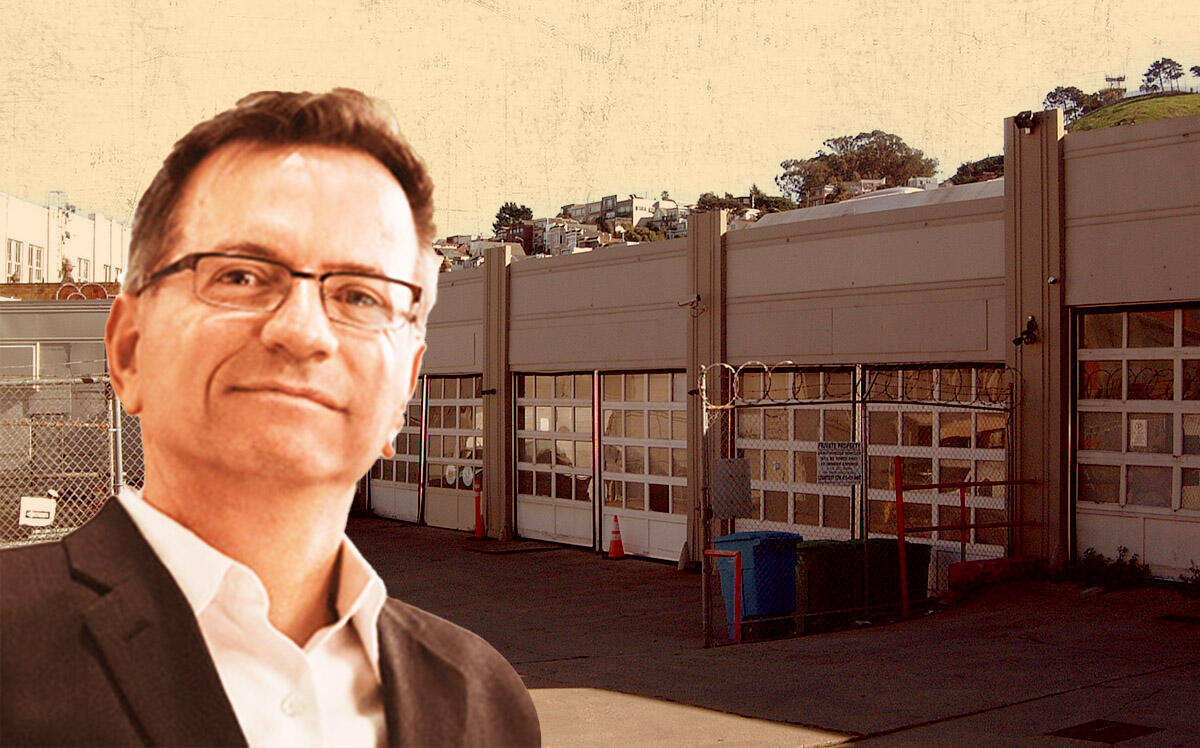Senior home developer Sequoia Living has purchased a 1-acre lot largely used for parking in San Francisco’s Mission neighborhood for $13.5 million. The off-market deal came about after condo developers “backed away from the site,” according to Sequoia’s head of business development David Latina, who said the non-profit plans to build affordable senior housing.
Sequoia Living, which also develops continuing care communities with built-in health and dining services like The Sequoias tower near Japantown, had focused on a different development site in the area, Latina said via email. Then the company’s agent said the lot at 1633 Valencia Street could be available. It is in a triangular island formed by the intersections of Mission, Cesar Chavez and Valencia streets, and Latina said the site’s transit and pedestrian-friendly location near shopping, groceries and healthcare was a big part of its appeal.
The seller is an LLC connected to KLW Investments, according to public records. KLW also owns several other commercial buildings and lots in the area, as well as the Army Lofts next door. The Art Deco apartment building and art studio space is better known to many San Franciscans as the old Sears building, as it was built and occupied by the department store from 1929 to 1975.
The apartment building had been using the parking lot for its residents, Latina said, and the owners had also rented out the one-level building on the property to a variety of businesses. Most recently it was the home of City Surf Project, a non-profit dedicated to introducing surfing and ocean stewardship to San Francisco youth.
City Surf Project and the other commercial renters left and KLW chose not to bring in new tenants, Latina said. It also moved its Army Lofts parking spots to a different lot it owns, so no one will be displaced by the development.
That doesn’t mean it will be easy to break ground. Latina estimates it will take two to three years to get through the planning and financing process, and said Sequoia Living knows the development process is “risk inherent.”
“We will have to be patient as we attempt to structure the complicated financing and subsidies required from all of the various local, state, federal and philanthropic funds necessary to make the project feasible both for development and in operations,” he said. “Sequoia Living is actively seeking other non-profit housing and service partners to leverage our resources, mitigate our risks and accelerate the development of affordable housing to be part of the solution to the housing crisis.”
Latina said he has worked in development for both affordable and market-rate housing since the 1990s and that housing has always been difficult to build in San Francisco. But in recent years he has seen positive signs in the increased “political awareness” about the need to build more housing, as well as legislative changes from the state that help speed up the entitlement process for affordable housing.
Plus, the economic conditions making it difficult for for-profit developers to move forward on sites like this one could leave room for more non-profits to be competitive. Latina said there had been previous offers on the property but that after the initial condo developer backed off, no other market-rate developers stepped up, and he was not aware of any other offers on the property while Sequoia was in negotiations.
The development news can’t come soon enough for the senior population of San Francisco, which the city estimated to be about 185,000 people or just under one-quarter of the total population in its 2022 Dignity Fund Community Needs Assessment. Nearly one third of the 60-plus-year-old survey respondents identified as low-to-moderate income, with only 65 percent of all San Francisco seniors stating that they “almost always” have a place to stay overnight that meets their needs. Just about half could “almost always” afford their rent or mortgage.
“The Silver Wave is coming and we already have long waiting lists at all of our affordable communities,” Latina said.
